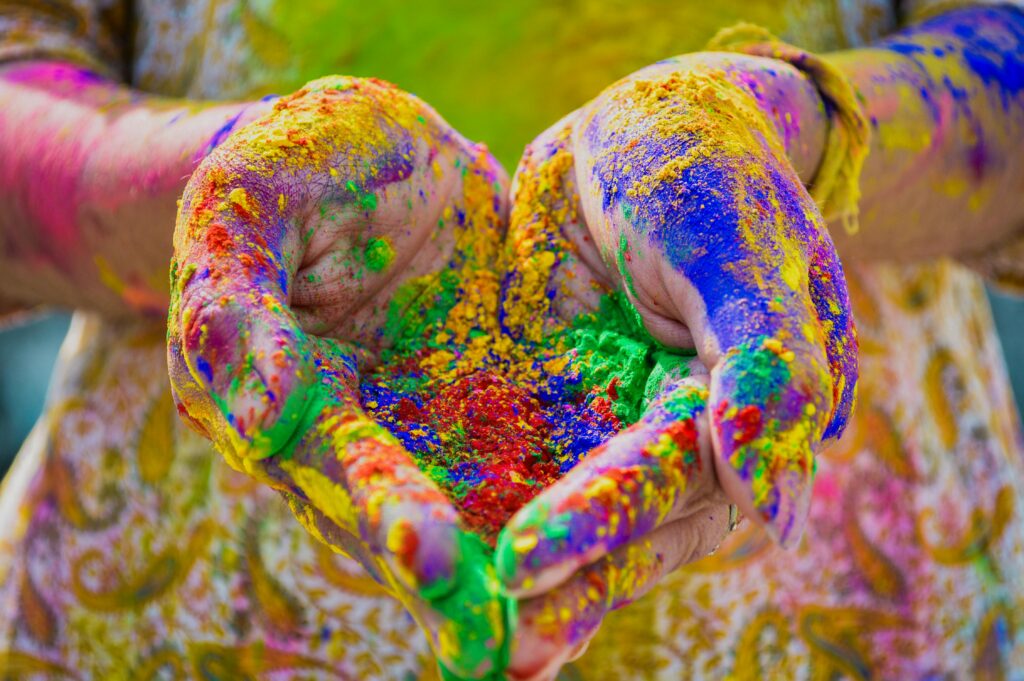Holi, the vibrant festival of colors, is a celebration of life, joy, and the arrival of spring. But for a gardener, Holi is more than just a festival—it’s a reflection of nature’s beauty, the blooming of flowers, and the transition into a season of new growth. From the colors derived from plants to the importance of soil and water, Holi and gardening share a deep connection. In this blog, we will explore Holi from a gardener’s perspective, focusing on the role of nature, plant-based colors, and eco-friendly celebrations.
The Connection Between Holi and Gardening
For gardeners, Holi is a festival that symbolizes renewal and rebirth—just like plants emerging from dormancy after winter. It is a time when flowers are in full bloom, painting gardens with hues of red, yellow, pink, and purple. The fragrance of spring flowers like marigolds, hibiscus, and roses fills the air, creating a natural celebration of color.
Just as Holi brings people together, a garden unites nature, pollinators, and humans in a harmonious ecosystem. The festival reminds gardeners of the importance of nurturing life, protecting biodiversity, and celebrating nature’s palette.

Natural Colors from Plants: A Gardener’s Gift to Holi
Traditionally, Holi colors were made from flowers, leaves, and herbs, making them safe for the skin and the environment. As a gardener, you can revive this beautiful tradition by making your own plant-based Holi colors:
Yellow:
Dried marigold petals or turmeric powder can be used to create a bright yellow Holi color. Marigolds are easy to grow and attract pollinators, making them a must-have in any garden.
Red:
Hibiscus flowers, red sandalwood powder, or dried rose petals can be ground into a fine red powder. These flowers not only add beauty to your garden but also have medicinal benefits.
Green:
Spinach, neem leaves, and henna can be dried and powdered to create a safe green color. These plants are known for their healing and cooling properties.
Blue:
Butterfly pea flowers (Shankhpushpi) produce a stunning blue dye when dried and crushed. These flowers are also used in herbal teas and are easy to grow in home gardens.
Purple and Pink:
Beetroot and bougainvillea flowers provide natural pink and purple hues. Soaking these flowers in water overnight creates a rich, vibrant color for Holi.
By using natural plant-based colors, gardeners can celebrate Holi in a way that is kind to the skin, soil, and water bodies.
Holi and the Importance of Soil and Water Conservation
While Holi is a joyous festival, excessive use of synthetic colors and water can harm plants, soil, and local water sources. As a gardener, you can take steps to make Holi more eco-friendly:
1. Use Dry Colors:
Opt for flower-based powders instead of chemical colors, which can be toxic to soil and plants.
2. Protect Your Garden:
Cover delicate plants to prevent synthetic color contamination, which can alter soil pH and harm plant growth.
3. Compost the Flowers:
After Holi, collect used flowers and add them to your compost bin. This reduces waste and enriches your soil naturally.
Gardening Lessons from Holi
Holi teaches gardeners valuable lessons about patience, diversity, and the beauty of nature. Just as colors blend to create a masterpiece, different plants come together to form a thriving garden. The festival reminds us that every flower, leaf, and tree plays a role in the larger ecosystem, just as every person adds to the joy of Holi.
Conclusion
For a gardener, Holi is not just a festival—it is a celebration of nature’s artistry. By using plant-based colors, conserving resources, and protecting gardens, we can make Holi a more sustainable and meaningful experience. This year, let your garden inspire your Holi celebration, and let Holi inspire your love for gardening.
How will you celebrate an eco-friendly Holi this year? Share your thoughts in the comments!
Also consider adding new plants to your garden. From the link below
